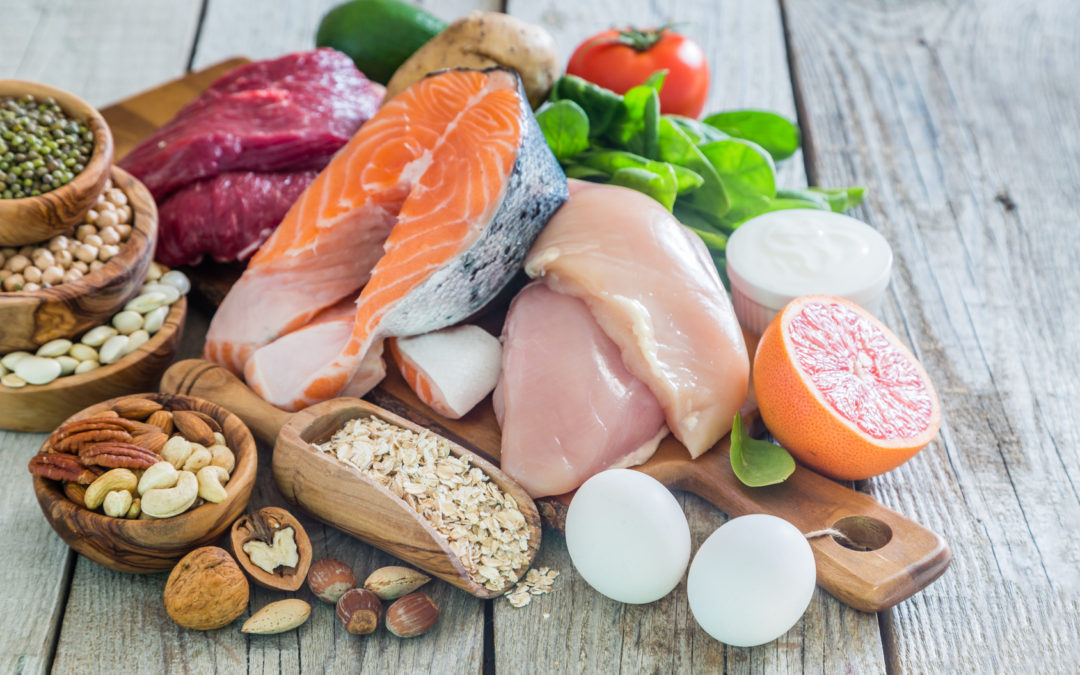Omega-3 is an essential fatty acid.
it’s a polyunsaturated fat that’s essential for human health. It’s “essential” because our bodies can’t make it, so we have to eat it.
We need omega-3 fatty acids for:
- Hormone production
- Proper development and functioning of the brain
- Proper development and functioning nervous system
- Formation of healthy cell membranes
- Energy
- They can also can lower blood pressure, especially in the elderly.1
Omega-3 reduces inflammation, and therefore can lower your risk of
heart disease, cancer, arthritis, Alzheimers’ and memory loss with aging. 6,7 Getting more omega-3 in the diet may help you to avoid other physiological problems but more study is needed. 5,6,7
Looking for a good source of omega-3?
Believe it or not, it’s not only found in fish, but in almost all, high quality meats.
You have healthier fat in your body when you eat well and exercise. So do animals.
For example, grass fed cows have about twice as much omega-3 in their fat compared to grain fed cows because the grass they eat provides it. 3,5 They also have a healthier ratio of omega-6 to omega-3 fatty acids. 8
Chickens that eat greens and insects, or grains high in omega-3, like flax, chia, and canola, have higher levels of omega-3.5,8
Fish get their omega-3s from eating algae and krill.5,8
Free-range animals that roam while they eat grass and other foods found in nature not only have better fat, but they have less fat because they’re more active. 3

There’s a difference between farmed fish and wild fish but it may not be what you think.
Studies have found that farm raised fish, particularly salmon, had slightly more omega 3s because they have more fat than wild fish. 4 Whichever fish you’re buying, it’ll have a significant number of omega-3s and you don’t have to worry about adding too much fat or calories to your diet. 2
Fish is still your best source of omega-3 fat.
A 3.5-ounce serving of grass-fed meat averages about 80 milligrams of omega-3s—twice as much as regular beef. And yet, the same amount of salmon can average 1,050 milligrams of omega-3s.2,3
Keep in mind that there’s no standard amount of omega-3 in any fish. A study that measured fatty acids in 76 different fish species from six regions of the United States found big variations in the omega-3 content in all samples. 4 Differences are due to the fact that fish are harvested at different locations, at different times of the year, and have different feeding patterns and formulations (in the case of farmed fish).4
The best thing to do is follow the American Heart Association’s guidelines and eat two servings (approx 8 oz) of fish per week.9 Remember baked or broiled, or steamed will always be healthier than deep fried. Otherwise, if you eat what you can afford and what’s available, you’ll be just fine.2,7,9
If you’re not a fan of red meat or fish, Omega-3s are also found in…
- flaxseed
- soybean
- canola oils
- chia seeds
- walnuts
- algae
- eggs from organic, free range chickens
- yogurt*
- juices*
- milk*
*Omega-3s are not naturally found in these products, companies have added omega-3 to them.5
Keep in mind that when you get omega-3 from plant sources
your body needs to further convert the plant form of omega-3 (ALA) into the forms that actively support health (DHA, EPA). The body is, at best, 15% efficient at this conversion (some reports say as low as 1%).5,8,10,11
Omega-3 in fish (DHA and EPA) is ready to use with no conversion necessary. You need to eat at least 6.7 grams of plant omega-3 (ALA) to get one gram of the beneficial omega-3 that seafood offers.
Where do you get your omega-3 from? Let us know in the comments below.
This article was co-written with Courtney Spoutz, a featured blogger for LuciFit, LLC. She is currently finishing her degree in Exercise Science at Taylor University.
It’s the second in a series of articles on red meat and other meat sources. See the first one here.
References:
- Haff, Greg, and N. Travis Triplett. Essentials of strength training and conditioning. Champaign, IL: Human Kinetics, 2016. Print.
- Finding omega-3 fats in fish: Farmed versus wild http://www.health.harvard.edu/blog/finding-omega-3-fats-in-fish-farmed-versus-wild-201512238909
- Ask the Experts: Grass-Fed Beef for Omega-3s? http://www.berkeleywellness.com/healthy-eating/food/nutrition/article/grass-fed-beef-omega-3s
- Cladis, Dennis P., Alison C. Kleiner, Helene H. Freiser, and Charles R. Santerre. “Fatty Acid Profiles of Commercially Available Finfish Fillets in the United States.” Lipids 49.10 (Oct. 2014): 1005-018.
- Omega-3 Fatty Acids: Fact Sheet for Health Professionals https://ods.od.nih.gov/factsheets/Omega3FattyAcids-HealthProfessional/#
- University of Maryland Medical Center. (2017). Omega-3 fatty acids. [online] Available at: http://www.umm.edu/health/medical/altmed/supplement/omega3-fatty-acids [Accessed 28 Sep. 2017].
- Omega-3 Fatty Acids: Fact Sheet. WebMD. 2017. Available at: http://www.webmd.com/healthy-aging/omega-3-fatty-acids-fact-sheet. Accessed September 28, 2017.
- Omega-3 fatty acid. Enwikipediaorg. 2017. Available at: https://en.wikipedia.org/wiki/Omega-3_fatty_acid. Accessed September 29, 2017.
- Fish and Omega-3 Fatty Acids. American Heart Association. 2017. Available at: https://healthyforgood.heart.org/Eat-smart/Articles/Fish-and-Omega-3-Fatty-Acids. Accessed September 29, 2017.
- What’s the difference between EPA, DHA & ALA?. Alwaysomega3scom. 2017. Available at: http://alwaysomega3s.com/learn/epa-dha-ala-omega-3s. Accessed October 1, 2017.
- Ketz J, Rodavich M, Barnes K. Absorption of Marine vs Non-Marine sources of EPA and DHA. Fasebjorg. 2017. Available at: http://www.fasebj.org/content/27/1_Supplement/867.3.abstract?sid=004bf6e1-b251-4bea-a51f-dfbb62579177&utm_source=TrendMD&utm_medium=cpc&utm_campaign=FASEB_J_TrendMD_0. Accessed October 1, 2017.

